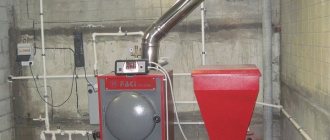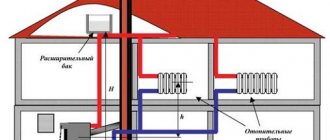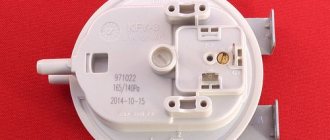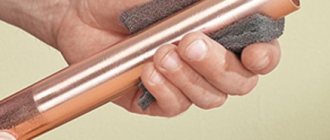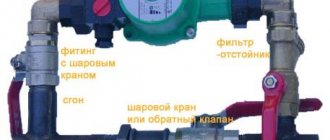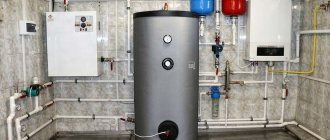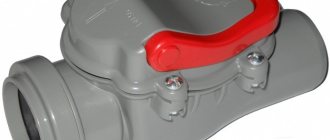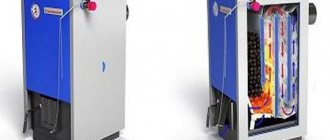During the combustion of any type of fuel, soot and tar deposits accumulate on the internal heating surfaces of the boiler unit. They are good heat insulators and, with their significant thickness, reduces heat transfer from the internal heat exchanger to the heated water. In addition, such deposits clog the flow sections of the smoke ventilation system, as a result of which the speed of movement of flue gases in them decreases.
This process contributes to overheating of the structural elements of the boiler with subsequent failure. Soot, in addition, has the ability to ignite in smoke ventilation ducts, creating a fire in the house. For prevention and in order to prevent the occurrence of such dangerous processes, each heating boiler must undergo periodic cleaning of heating surfaces and smoke exhaust channels. And the owners of such equipment should know how to clean the boiler from tar.
Causes of resin accumulation
Particularly dangerous fuels in terms of the formation of tar on heating surfaces are firewood, low-quality coal, peat fuel and pellets. In solid fuel heating units, tar accumulates much earlier for the following reasons:
- Use of low-quality or raw fuel;
- an excessively large amount of firewood is loaded into the combustion chamber;
- use of a heating unit for the disposal of industrial and household waste;
- low-temperature regime of furnace combustion processes, due to which the fuel smolders and does not flame;
- the use of firewood containing a huge amount of volatile resinous substances that settle on the walls of the boiler in the zone of low combustion temperatures;
- lack of oxygen supplied from the air to organize complete combustion of the fuel, resulting in underburning of the fuel.
How to prevent large boiler contamination
In order to prevent the formation of tar, it is necessary to heat the boiler with a maximum volume of air, which in turn guarantees the complete combustion process of the fuel. This mode ensures the operation of the solid fuel boiler unit with maximum efficiency. You need to buy wood fuel a year before the heating season and store it in a dry place so that it has time to dry out during this period. It is allowed to use firewood with a moisture content of 20% and below.
A conventional solid fuel boiler (not condensate type) must operate at a water temperature in the return pipeline of the heating circuit of at least 55 C. This mode is supported by a three-way valve with a thermal head. Such a temperature schedule for the return of coolant from the consumer will prevent the formation of tar and “dew point”, at which destructive acid caused by the formation of condensation accumulates in the smoke ventilation ducts.
How often and what parts need to be cleaned
The equipment needs external and internal cleaning. How often should a heat exchanger be descaled? Experts recommend doing this once a year. What other components of the floor-standing and wall-mounted boiler need to be cleaned:
- burner;
- igniter;
- filters;
- nozzles;
- coaxial chimney, conventional shaft;
- pipes;
- firebox
Let's look at how to properly clean components in boilers "AOGV", Baxi (Baxi), "Vailant", "Proterm" and others with your own hands.
Heat exchanger
The operation of all double-circuit boilers is controlled by a three-way valve. It switches heat from one radiator to another, so you need to monitor its functionality.
The principle of cleaning it and the choice of a suitable product depend on the structure of the heat exchanger. Radiators are distinguished:
- Bithermal. The design consists of two tubes, heating is carried out simultaneously for DHW and heating. Such products are difficult to clean;
- Lamellar. Consist of layers of plates;
- Fire tubes. Liquid circulates through the coil tube. More often found in floor-standing units “Danko”, “Aton”, “Siberia”.
What kind of washing happens:
- Chemical;
- Mechanical;
- Hydrodynamic;
- Electric discharge.
To work you will need:
- wrench;
- brush-brush;
- metal brush, made of lint;
- screwdriver.
First you need to get to the node.
- Close the gas valve;
- Remove the cover. This may require unscrewing the bolts;
- Disconnect the sensors connected to the heat exchanger.
For proper cleaning, the unit must be dismantled. Using a brush and brush, clean the surface and internal parts from soot, dust, and soot. If descaling of internal parts is required, chemical reagents can be used.
The reagent is pumped into the booster. The pump hoses are connected to the radiator, and flushing starts. Upon completion, all parts are washed with clean water. Users recommend using ordinary household products - they are much cheaper than specialized ones. The main thing is that they are thick.
You can use home remedies. Prepare a solution of citric acid in a ratio of 200 grams per 5 liters and pour it into the heat exchanger. Place the knot in a metal basin of water and place it on the stove to heat for half an hour. Then rinse in the shower.
Plates and parts should not be subjected to strong mechanical stress, otherwise they will deteriorate or become deformed.
Hydrodynamic cleaning consists of pumping pressure. Thus, a high-pressure stream is forced through the system, removing contaminants and deposits.
Why is the resin in the boiler dangerous, the frequency of cleaning
A heating boiler operating on solid fuel, the heating surfaces of which are covered with soot, resin and tar, cannot function for a long time. First of all, its main module, which is responsible for heating - the heating heat exchanger - will fail. In addition, oily accumulations that accumulate in huge volumes are corrosive, which in turn reduces the operating period of such a device. Likewise, the risk of gas contamination in the combustion chamber increases due to a fall or zero draft in the combustion chamber.
How often does the boiler need to be cleaned?
The frequency of preventative cleaning of the unit is determined by the type of fuel. If you use high-quality dry raw materials for combustion processes, then cleaning is carried out no more than once every 40 days. When using low-quality wet fuel - 2 times per heating month. In addition, during operation, it is necessary to monitor the vacuum in the furnace and the completeness of fuel combustion; if these parameters do not correspond to the technological conditions, additional cleaning of the boiler heating surfaces is carried out.
To slow down the processes of soot formation in smoke exhaust ducts, folk remedies are often used:
- Table salt, which is poured directly into the firebox. It has been proven that it successfully breaks down deposits on heating surfaces and carries them through the flue into the atmosphere.
- Potato peelings or starch poured into the firebox over hot fuel. Has a softening effect. After the fuel has burned and the firebox has cooled, clean off the top contaminated layer with an iron spatula or scraper.
Combustion products and the cause of their occurrence
By-products that appear during the combustion process are:
The reasons for the appearance of these substances are the following important points:
- Causes of soot:
- there is not enough oxygen for the combustion process;
- Fuel combustion temperature is too low.
- Factors influencing the appearance of resin:
- low-quality fuel is used;
- the fuel material has a high degree of humidity;
- the boiler operates at low temperature;
- Too much fuel is loaded into the firebox.
- Tar appears in the following cases:
- weak air flow into the combustion chamber of the pyrolysis boiler;
- incorrect design of the unit;
- low height chimney.
As we can see, the main reasons for the appearance of harmful substances are poor fuel and the technical aspects of organizing the combustion process.
How to clean tar from a solid fuel boiler
There are many methods for cleaning boiler heating surfaces; it is better to use the one specified as the main one by the boiler manufacturer. If the user does not have such information, it can be found on the Internet. In this matter, the frequency of cleaning is of greater importance. There are 3 key methods for cleaning tar and soot from the internal heating surface of the boiler: mechanical, chemical and steam.
Mechanical
This method is performed using specialized tools in the form of steel brushes and scrapers of various sizes. It is necessary to prepare in advance for the cleaning procedure. Before cleaning the boiler from the resin, warm it up. This will require half a bucket of anthracite or 15 kg of non-resinous dry firewood. They are burned in a furnace to create conditions for burning most of the resin, thereby simplifying further cleaning.
During the work process, care must be taken not to damage the internal surfaces of the device with the tool. Basic cleaning points:
- Melt the unit to soften the hardened resin.
- Turn off the boiler and wait until it cools down to a temperature of 40-50 C.
- The smoke ventilation damper must remain open.
- Carefully remove all contaminants on the internal heating surfaces of the boiler.
- After cleaning is complete, I fire up the boiler so that the remaining deposits burn out completely.
Chemical
It is based on the use of specialized means for cleaning heating surfaces. Today it is very popular because it does not require a significant investment of time and money.
There are 2 types of dry cleaning:
- Before cleaning the boiler from tar, the slagged partitions of the boiler are treated with a cleaning acid solution, which quickly destroys unwanted deposits, and after which it will not be difficult to get rid of them mechanically.
- The chemical cleaner is poured directly onto the burning fuel. It reacts with tar deposits and destroys them, removing them from the boiler unit through the chimney.
More commonly used as a reagent are:
- Adipic acid solution, calculated concentration. Interacting with furnace deposits, the acid dissolves them, converting them into salts, which are washed off with ordinary clean water.
- A solution of sulfamic acid easily destroys soot and resin and is also easily washed off with tap water.
Steam
This cleaning method requires a steam generator to generate steam for cleaning. This could be an ordinary household steam device, used, for example, for cleaning the house and capable of producing high pressure steam. It softens deposits and makes removal easier. Electric steam cleaning provides an option to simply get rid of not only soot deposits and resin deposits, but also fungus and mold. In some cases, the source of steam can be obtained from a nearby operating steam heating boiler.
Where to begin
Before you start cleaning a gas boiler, it is worth understanding how this equipment is equipped. It contains the following components that require periodic cleaning:
- burner with nozzles;
- igniter;
- heat exchanger;
- gas filter;
- firebox;
- chimney.
To clean the equipment, you will need to prepare all the necessary tools:
- plastic or metal brush for cleaning the chimney;
- scrapers;
- steel rope;
- special hooks;
- holders for brushes of various lengths.
The cleaning process itself will be reduced to the following steps:
- Closing the gas supply valve.
- I dismantle the boiler door, nozzles, and burner tube.
- Removing the top cover of the equipment.
- Removing the insulation sheet.
- Carrying out the dismantling of the chimney.
- Choosing a metal brush.
- Carefully clean the heat exchanger from soot.
- To clean the heat exchanger channels, use a vacuum cleaner.
- Cleaning the walls of the boiler with a scraper and brush and wiping with a rag.
- We clean the chimney using a brush with a long handle.
- Reassemble all boiler components in reverse order.
Attention: when disassembling gas equipment, carefully remember the location of all parts and components.
How to clean individual units of the unit
Let's look at how to clean individual components of the unit if they become clogged and stop working properly.
When the igniter is in normal condition, the flame will have a blue tint. If, during operation of the heating equipment, the flame turns yellow, it’s time to clean the igniter. The procedure for cleaning the igniter boils down to:
- Blocking the flow of gas to the equipment.
- Unscrewing the igniter.
- Thoroughly clean the igniter from soot and dirt with a wire brush.
- Blowing out the igniter.
- Installing it in its original place.
If you need to clean the burner with nozzles, you will need:
- Shut off the gas supply.
- Remove the burner.
- Carefully remember the location of the injectors and carefully unscrew them.
- Clean the injectors with a brush.
- Clean the burner with a brush.
- Blow out the burner hole with pumping equipment.
- Insert the injectors into place.
- Install the burner.
Important : the burner with nozzles must be cleaned at least once a year, before the start of the heating season. The gas filter cleans the gas from impurities and contaminants and must be cleaned regularly.
The heat exchanger can become clogged both inside and outside. Its outer part becomes dirty with soot, and its cleaning is carried out mechanically. To effectively clean the heat exchanger, you will need to stock up on the following tools:
- scraper;
- wire brush;
- ruffs of various shapes;
- power tools and cleaning attachments.
The cleaning procedure boils down to:
- Disconnecting the boiler from electricity and gas supply.
- Removing the heat exchanger.
- Clean it with previously prepared tools.
- Installing the unit in its original place.
Attention : when cleaning the heat exchanger, it is recommended to use a tool without sharp edges. If the unit is damaged, it will lead to corrosion.
The cause of internal clogging of the heat exchanger is most often scale and will require dry cleaning using:
- adipic acid;
- sulfamic acid solution;
- special gel.
Attention : it is necessary to select chemicals depending on the degree of contamination of the heat exchanger.
As for cleaning the firebox and chimney, the collection of soot on their walls reduces the functioning of the boiler, so it is recommended to clean the chimney soot regularly.
Video about cleaning the boiler from tar
Thus, we can say with confidence that resin deposits on the heating surfaces of the boiler cause enormous harm to its internal structural elements. In solid fuel boilers operating on dry high-quality fuel, the boiler is cleaned at least once every 40 days, and also based on the results of the unit’s operation. If the vacuum in the furnace drops, it must be carried out immediately. There are many methods for cleaning the internal heating surfaces of a boiler, the main thing is that they all require strict adherence to safety precautions. The user who will perform such operations must have protective clothing, a respirator, goggles and gloves.
Boiler cleaning tools
In order to efficiently clean gas equipment from soot and deposits, you must first of all acquire the necessary set of tools.
This kit should include:
- metal brush or boiler brush;
- a chimney brush can be plastic or metal;
- holders for brushes of various lengths;
- scrapers;
- steel rope;
- special hooks.
Having the necessary set of tools, you can proceed directly to cleaning the boiler and chimney.
You may also be interested in an article on how to flush the heating system of a private home.
Read an interesting article about cleaning solid fuel boilers here.
